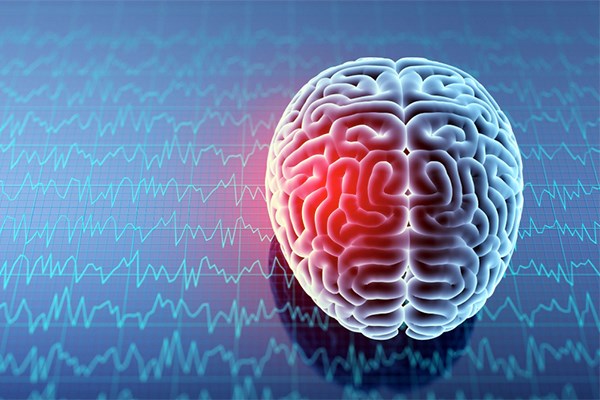An important question still being researched is how much rest to prescribe after a concussion. With the advent of active rehabilitation, along with other techniques, we can better manage our concussion patients on the field and in the clinic.
Concussion has a wide variety of definitions in health care today. The term has sometimes been used interchangeably with traumatic brain injury. The Concussion in Sport Group (CSIG), who recently held the 5th International Conference on Concussion in Berlin, defines sport- related concussion as “a traumatic brain injury induced by biomechanical forces” McCrory et al.). They then go on to break down the features of a sport-related concussion to include:
- Force applied to the body that then applies force to the head, whether that be a direct or indirect head injury1
- Neurologic impairment that could result from structural or functional damage to the brain1
This article touches on some of the new recommendations produced by the most recent Concussion in Sport International Conference, along with research suggesting an active rehabilitation program.
When an athlete suffers an injury during a sport, one should include concussion in the differential diagnosis if the athlete displays any of the following: headache, variable emotions, memory loss, loss of consciousness or trouble with balance.1 The most widely accepted test to evaluate for concussion is the Sport Concussion Assessment Tool 5th Edition (SCAT5). It is important to be thorough with your evaluation because early return to play resulting in a subsequent injury could increase the athlete’s risk for post-concussion syndrome. Along with the SCAT5, athletes should have their vision, gait, balance, and reaction time tested for abnormalities post-injury.1
If concussion is suspected after the initial assessment, the patient must be completely removed from play. The past consensus was to prescribe a period of physical and cognitive rest after a concussion injury until the patient was asymptomatic. Now providers are starting to prescribe “subthreshold exercise” (Leddy et al.) after the acute phase of injury, 24-48 hours.1,4 This includes activity that is below the threshold of causing concussion-related symptoms. Studies have shown this may lead to improved outcomes and faster recovery.
An important question still being researched is how much rest to prescribe after a concussion prior to starting activity. When athletes were not instructed how much rest to take, those who participated in a medium amount of physical activity performed superiorly on neurocognitive testing as opposed to those who chose to perform no activity or even those who participated in a high level of activity after their injury.3
Physiologically, concussion causes alteration in the autonomic nervous system, leading to impairment of cerebral blood flow.3 Increasing blood flow through subthreshold exercise could lead to improvements in recovery. Studies have shown greater levels of neuronal repair and cortical connectivity through aerobic exercise.3
Another theoretical detriment caused by concussions is the body’s response to CO2. Athletes with prolonged symptoms leading to post-concussion syndrome, in one study, showed an abnormal rise in CO2 during exercise, which subsequently led to increase blood flow to the brain — exacerbating concussion symptoms.3 Subthreshold exercise was able to restore their sensitivity to CO2.
If a patient is still experiencing concussion-related symptoms weeks to months after the initial injury, they may be suffering from post-concussion syndrome (PCS). PCS rates are higher in younger, female athletes as well as those with previously diagnosed depression or migraines.1,2 It is very important to perform a thorough physical and neurologic exam after the injury and at subsequent clinic visits.
Cervical and vestibular injuries can lead to dizziness, headaches, and vision changes.2 Cervical, vestibular and psychological rehabilitation are some examples of why the approach to the management of concussions needs to include multiple facets.
Lastly, another new recommendation from CSIG was to involve neuro-psychologists in the assessment and management of patients who have suffered a concussion.1
Conclusion
Research continues to advance our knowledge of concussion and lead to improved ways of managing this condition. With the advent of active rehabilitation, along with the other concepts outlined above, we can better manage our concussion patients on the field and in the clinic.
References
1. McCrory PM, Meeuwisse W, Dvorak J, et al. Consensus Statement on Concussion in Sport—the 5th International Conference on Concussion in Sport Held in Berlin, October 2016. Br J Sports Med. 2017;51(11):838-847.
2. Leddy JJ, Baker JG, Willer B. Active rehabilitation of concussion and post-concussion syndrome. Phys Med Rehabil Clin N Am. 2016;27(2):437-454.
3. Ledd JJ, Hinds A, Sirica D, Willer B. The role of controlled exercise in concussion management. PM R. 2016;8(3 Suppl):S91-S100.
4. Schneider KJ, Leddy JJ, Guskiewicz KM, et al. Rest and treatment/rehabilitation following sport-related concussion: a systematic review. Br J Sports Med. 2017;51:930-934.



